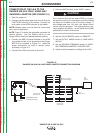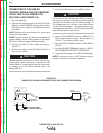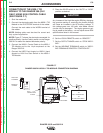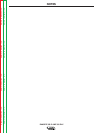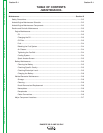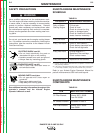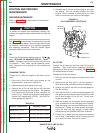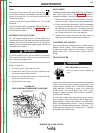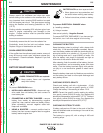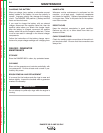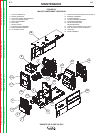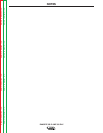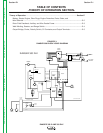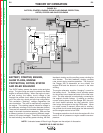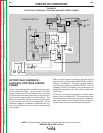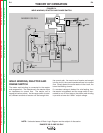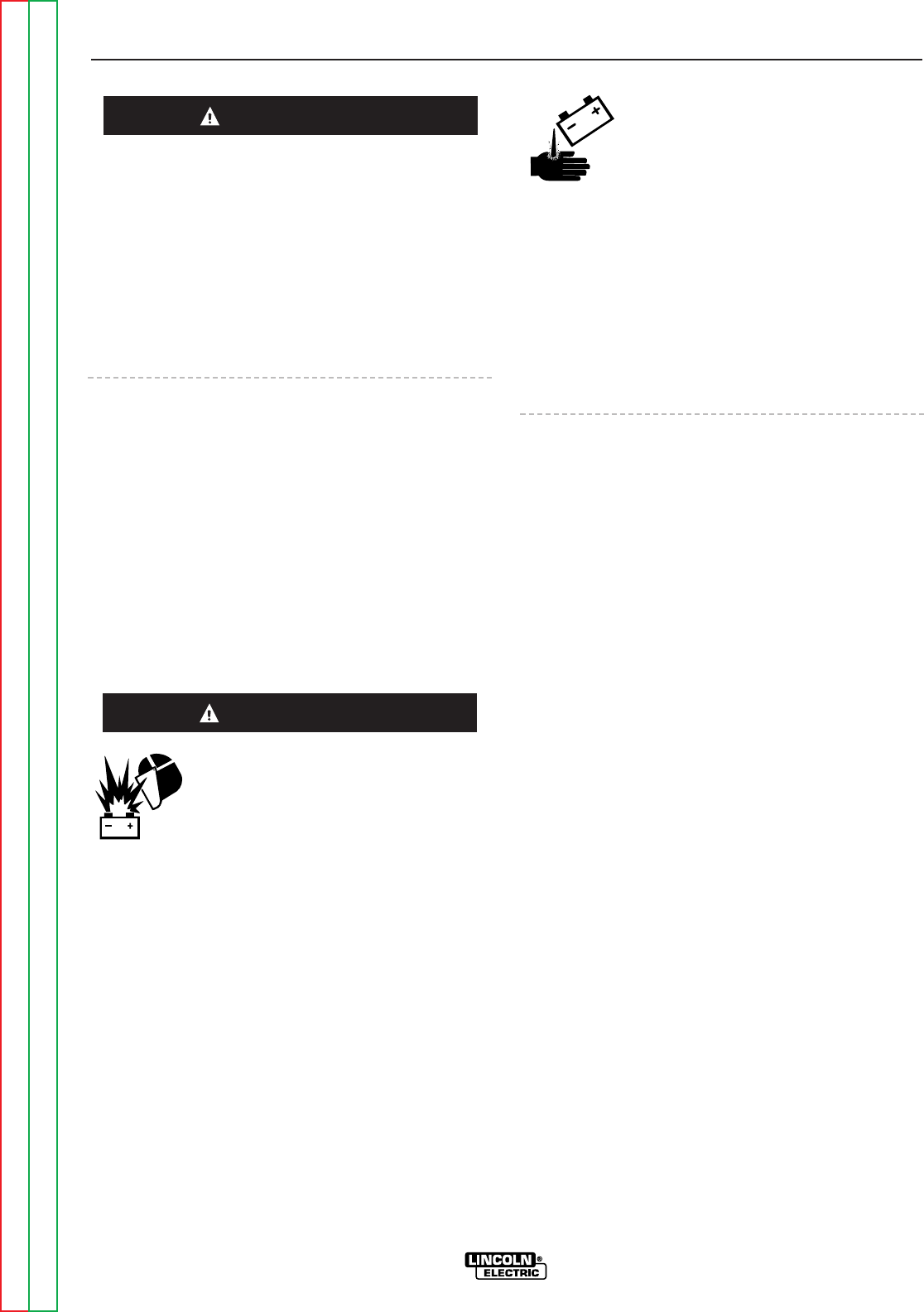
Always premix the antifreeze and clean tap water
before adding to the radiator or the overflow tank. It is
very important that a precise 50/50 solution be used
with this engine year round. This gives proper cooling
during hot weather and freezing protection to -34°F
(-37°C).
Cooling solution exceeding 50% ethylene glycol can
result in engine overheating and damage to the
engine. Coolant solution must be premixed before
adding to radiator.
Periodically remove the dirt from the radiator fins.
Periodically check the fan belt and radiator hoses.
Replace if signs of deterioration are found.
SPARK ARRESTER SCREEN
If the muffler has the optional spark arrester, remove it
every 50 hours or once a year, whichever comes first,
and inspect it. Clean the arrester. Replace it if you find
any damage.
BATTERY MAINTENANCE
GASES FROM BATTERY can explode.
• Keep sparks, flame and cigarettes
away from battery.
To prevent EXPLOSION when:
• INSTALLING A NEW BATTERY – disconnect neg-
ative cable from old battery first and connect to
new battery last.
• CONNECTING A BATTERY CHARGER – remove
battery from welder by disconnecting negative
cable first, then positive cable and battery clamp.
When reinstalling, connect negative cable last.
Keep well ventilated.
• USING A BOOSTER – connect positive lead to
battery first then connect negative lead to negative
battery lead at engine foot.
BATTERY ACID can burn eyes and skin.
•Wear gloves and eye protection and
be careful when working near battery.
• Follow instructions printed on battery.
To prevent ELECTRICAL DAMAGE when:
a) Installing a battery.
b) Using a booster.
Use correct polarity - Negative Ground.
To prevent BATTERY DISCHARGE, if you have an igni-
tion switch, turn it off when engine is not running.
CLEANING THE BATTERY
Keep the battery clean by wiping it with a damp cloth
when dirty. If the terminals appear corroded, discon-
nect the battery cables and wash the terminals with an
ammonia solution or a solution of 1/4 pound (0.1113
kg) of baking soda and 1 quart (0.946 l) of water. Be
sure the battery vent plugs (if equipped) are tight so
that none of the solution enters the cells.
After cleaning, flush the outside of the battery, the bat-
tery compartment, and surrounding areas with clean
water. Coat the battery terminals lightly with petrole-
um jelly or a non-conductive grease to retard corro-
sion.
Keep the battery clean and dry. Moisture accumulation
on the battery can lead to more rapid discharge and
early battery failure.
CHECKING SPECIFIC GRAVITY
Check each battery cell with a hydrometer. A fully
charged battery will have a specific gravity of 1.260.
Charge the battery if the reading is below 1.215.
NOTE: Correct the specific gravity reading by adding
four gravity points (0.004) for every five degrees the
electrolyte temperature is above 80°F (27°C). Subtract
four gravity points (9.004) for every five degrees the
electrolyte temperature is below 80°F (27°C).
CHECKING ELECTROLYTE LEVEL
If battery cells are low, fill them to the neck of the filler
hole with distilled water and recharge. If one cell is low,
check for leaks.
The battery is a group 45, with a rating of 495 cold
cranking amps.
MAINTENANCE
D-5 D-5
RANGER 300 D AND 300 DLX
Return to Section TOC Return to Section TOC Return to Section TOC Return to Section TOC
Return to Master TOC Return to Master TOC Return to Master TOC Return to Master TOC
CAUTION
CAUTION



